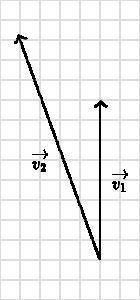
Mathematics, 24.07.2021 20:40 dargy
Naz is swimming the English Channel from France to England. A few minutes ago, she was swimming in calm waters at a velocity (speed and direction)  . The direction of
. The direction of  is due north, and the speed is 8 km/h.
Now, however, she has encountered a current. Without changing the way she swims, she is now moving at a velocity
is due north, and the speed is 8 km/h.
Now, however, she has encountered a current. Without changing the way she swims, she is now moving at a velocity  . The direction of
. The direction of  is 20° west of north, and the speed is 12 km/h.
is 20° west of north, and the speed is 12 km/h.
(Assume "due east" is 0°, "due north" is 90°, etc.)
What is the speed of the current? (Round to the nearest hundredths)
In what direction is the current flowing? (Round your final answer to the nearest degree, your answer should be between 0° and 360°.)
All help is appreciated, thank you! Please note: I will not accept links to answers nor answers that are incomplete, inappropriate, and irrelevant to the topic. Any answers like those WILL be reported and moderators will deal with them correspondingly. Once again, thank you for your help!


Answers: 2


Another question on Mathematics

Mathematics, 21.06.2019 15:20
Asmall (but heavy) particle placed in a glass of water will follow a zigzag motion because the particle will bounce off of the water molecules it meets. this is called brownian motion. a physicist simulates this on a computer, by varying the distance a particle can travel (called the mean free length), on average, before it collides with a water molecule and assigning the change in motion to be one of 8 directions, each with a similar probability. by running the simulated particle (with the same mean free length) many times she determines that it should take 15 seconds, on average, for the particle to fall to the bottom, with a standard deviation of 1.5 seconds. next she lets a real particle fall through a glass of water and finds that it took 18 seconds. what does she conclude, and why?
Answers: 1

Mathematics, 21.06.2019 19:30
Evaluate 3(a + b + c)squared for a = 2, b = 3, and c = 4. a. 54 b. 243 c.729 add solution .
Answers: 1

Mathematics, 21.06.2019 21:30
In a test for esp (extrasensory perception), the experimenter looks at cards that are hidden from the subject. each card contains either a star, a circle, a wave, a cross or a square.(five shapes) as the experimenter looks at each of 20 cards in turn, the subject names the shape on the card. when the esp study described above discovers a subject whose performance appears to be better than guessing, the study continues at greater length. the experimenter looks at many cards bearing one of five shapes (star, square, circle, wave, and cross) in an order determined by random numbers. the subject cannot see the experimenter as he looks at each card in turn, in order to avoid any possible nonverbal clues. the answers of a subject who does not have esp should be independent observations, each with probability 1/5 of success. we record 1000 attempts. which of the following assumptions must be met in order to solve this problem? it's reasonable to assume normality 0.8(1000), 0.2(1000)%30 approximately normal 0.8(1000), 0.2(1000)% 10 approximately normal srs it is reasonable to assume the total number of cards is over 10,000 it is reasonable to assume the total number of cards is over 1000
Answers: 1

Mathematics, 21.06.2019 22:30
Abucket of paint has spilled on a tile floor. the paint flow can be expressed with the function p(t) = 6(t), where t represents time in minutes and p represents how far the paint is spreading. the flowing paint is creating a circular pattern on the tile. the area of the pattern can be expressed as a(p) = 3.14(p)^2 part a: find the area of the circle of spilled paint as a function of time, or a[p(t)]. show your work. part b: how large is the area of spilled paint after 8 minutes? you may use 3.14 to approximate pi in this problem.
Answers: 2
You know the right answer?
Naz is swimming the English Channel from France to England. A few minutes ago, she was swimming in c...
Questions

Mathematics, 16.12.2020 18:10

Mathematics, 16.12.2020 18:10

Health, 16.12.2020 18:10



Social Studies, 16.12.2020 18:10

English, 16.12.2020 18:10

English, 16.12.2020 18:10


Mathematics, 16.12.2020 18:10

Mathematics, 16.12.2020 18:10


Computers and Technology, 16.12.2020 18:10




Social Studies, 16.12.2020 18:10


History, 16.12.2020 18:10

Business, 16.12.2020 18:10



